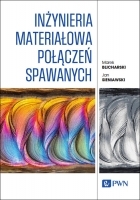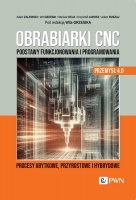Evaluation of possibilities of application of web-based tool for effective identification of mechanical properties of materials *
Ocena możliwości zastosowania internetowego narzędzia do efektywnej identyfikacji własności mechanicznych materiałów
Mechanik nr 07/2018 - Różne
ABSTRACT: The main purpose of the work is to present and test the developed web-based tool to identify parameters of rheological equations, whose functionality according to the presented results is comparable to existing desktop applications. The developed web-based application with a user-friendly interface uses selected optimization methods (Powell and Hooke-Jeeves algorithms). Criteria for selecting optimization methods are: robustness and frequent application to identification problems described in literature. Testing the developed application consists of comparing the identified stress-strain curves obtained from mechanical tests using the developed tool and commercial desktop application, and performing efficiency tests for the analyzed examples of rheological equations and optimization methods. For this purpose, two material models were used: a simple Hollomon’s model and a multi-parameter model used for steel, in which the influence of softening during the dynamic recrystallization is insignificant. The presented software is implemented in technologies such as JDK 1.8, Spring Framework and PrimeFaces, and passes the efficiency tests successfully.
KEYWORDS: mechanical tests, mechanical properties, optimization methods, rheological model, inverse analysis, web application
STRESZCZENIE: Głównym celem pracy jest przedstawienie i przetestowanie opracowanego narzędzia webowego do identyfikacji parametrów równań reologicznych, którego funkcjonalność – zgodnie z uzyskanymi wynikami – jest porównywalna z istniejącymi aplikacjami desktopowymi. Opracowana aplikacja internetowa, z przyjaznym dla użytkownika interfejsem, wykorzystuje wybrane metody optymalizacji (algorytmy Powella oraz Hooke’a-Jeevesa). Kryteria wyboru metod optymalizacyjnych to odporność rozwiązania na zaburzenia i częste zastosowanie do problemów odwrotnych opisanych w literaturze. Przetestowanie opracowanej aplikacji polega na porównaniu zidentyfikowanych krzywych naprężenie–odkształcenie, uzyskanych z testów mechanicznych z wykorzystaniem opracowanego narzędzia i komercyjnej aplikacji desktopowej, oraz na przeprowadzeniu testów wydajnościowych dla analizowanych przykładów równań reologicznych i metod optymalizacyjnych. W tym celu posłużono się dwoma modelami materiałowymi: prostym modelem Hollomona i modelem wieloparametrowym, stosowanym dla stali, w którym wpływ zmiękczania podczas rekrystalizacji dynamicznej jest nieznaczny. Prezentowane oprogramowanie jest wdrażane w takich technologiach, jak JDK 1.8, Spring Framework czy PrimeFaces, i pomyślnie przechodzi testy wydajności.
SŁOWA KLUCZOWE: testy mechaniczne, własności mechaniczne, metody optymalizacji, model reologiczny, analiza odwrotna, aplikacja webowa
BIBLIOGRAFIA / BIBLIOGRAPHY:
- Rusin T., Kopernik M. “Characterization of biocompatible materials using stereomicroscope 3D digital image correlation”. Advanced Engineering Materials. 18 (2016): s. 1651–1660.
- Feipeng Z., Pengxiang B., Jingbin Z., Dong L., Xiaoyuan H. “Measurement of true stress-strain curves and evolution of plastic zone of low carbon steel under uniaxial tension using digital image correlation”. Optics and Lasers in Engineering. 65 (2015): s. 81–88.
- Zhao K., Wang L., Chan Y., Yan J. “Identification of post-necking stress–strain curve for sheet metals by inverse method”. Mechanics of Materials. 92 (2016): s. 107–118.
- Gavrus A., Massoni E., Chenot J.L. “An inverse analysis using a finite element model for identification of rheological parameters”. Journal of Materials Processing Technology. 60 (1996): s. 447–454.
- Szeliga D., Pietrzyk M. “Testing of the inverse software for identification of rheological models of materials subjected to plastic deformation”. Archives of Civil and Mechanical Engineering. 7 (2007): s. 35–52.
- Kowalski B., Sellars M., Pietrzyk M. “Development of a computer code for the interpretation of results of hot plane strain compression tests”. ISIJ International. 40 (2000): s.1230–1236.
- Kopernik M., Milenin A., Major R., Lackner J.M. “Identification of material model of TiN using numerical simulation of nanoindentation test”. Materials Science and Technology. 27 (2011): s. 604–616.
- Rios L.M., Sahinidis N.V. “Derivative-free optimization: a review of algorithms and comparison of software implementations”. Journal of Global Optimization. 56 (2013): s. 1247–1293.
- Kirgat G.S., Surde A.N. “Review of Hooke and Jeeves direct search solution method analysis applicable to mechanical design engineering”. IJIERT. 1 (2014): s. 1–14.
- Çalışkan M., Varaksin O. “PrimeFaces Cookbook”. Birmingham: Packt Publishing, 2013.
- Brittain J., Darwin I.F. “Tomcat: The Definitive Guide”. Sebastopol: O’Reilly Media, Inc., 2007.
- Kumar A.A., Prasad A.R. “Comparison of unconstrained search methods for correlation of binary vapor liquid equilibrium (VLE) by five variants of Wilson model”. Journal of Chemical Engineering and Materials Science. 3 (2012): s. 58–64.
- Lewis R.M., Torczon V., Trosset M.W. “Direct search methods: then and now”. Journal of Computational and Applied Mathematics. 124 (2000): s. 191–207.
- Moiseev S. “Comparison of Multivariate Optimization Methods”. Maple Soft: 2006. https://www.maplesoft.com/applications/view.aspx?SID=1718&view=html (dostęp: 09.05.2018 r.).
- Hollomon J.H. “Tensile deformation”. Transactions of the Metallurgical Society of AIME. 162 (1945): s. 268–290.
- Kopernik M., Spychalski M., Kurzydłowski K.J., Pietrzyk M. “Numerical identification of material model for C-Mn steel using micro-indentation test”. Materials Science and Technology. 24 (2008): s. 369–375.























